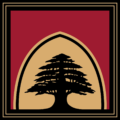About Us
Who We Are
Between the mountains of Lebanon and the mountains of Antakya, in the era prior to the Persian Invasion to the East, the sirwal was rooted in a civilization of noble origin; at that time, it became the traditional clothing of the Syriacs who lived in that area. The sirwal, a unique and comforting clothing design, was widely known among the first Maronite monks and villagers in 450 A.D. After invading the East, the Persians adopted this type of clothing-called sirwal in Syriac and called it šalvār. The sirwal, then, became the Ottoman Empire’s formal dress code 600 years after its appearance. The sirwal is made of a crafty cultural design along with an inveterate elegant style. This comforting and long-lasting design of this piece of clothing made for ten years, with big pockets intended for daily use, is so graceful and unique, that it absolutely reflects its pure oriental identity. Its sewing is not simple, but rather requires meters of fabric and high skills to get it fabricated; not to mention that it was indispensible and not easily accessible. It is said that a man can wear one for a long time, or even throughout his life. Being loose, it provides easy movement for workers and maintains moderate temperature of the body in summer and winter. Moreover, the sirwal, in all its exquisite versions, was worn by the elite. Many are the reasons that made us revive the sirwal nowadays; it is the value we render to the history of this scarce piece as well as the appreciation we owe to our ancestors, those who designed the sirwal and left their marks on it. The "Dairoyo" sirwal is crafted with elegancy and with high skills and quality by the nuns of Qanoubine valley; those nuns who use their magic fingers in order to make this masterpiece valuable spiritually and culturally.

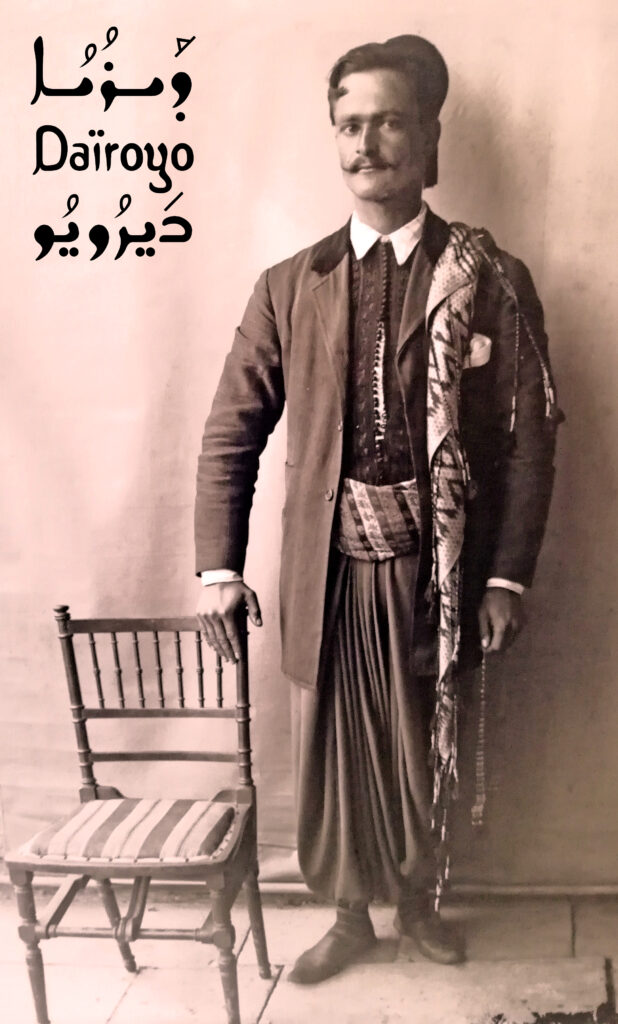
ما بين جبال لبنان وجبال إنطاكية، في حقبة ما قبل اجتياح الفرس للشرق، ولد الشروال من رحم حضارة أصيلة ومتجذّرة وبات لباس السريان أيّ السكّان الأصليين في المنطقة حينها
إن هذا التصميم الفريد والمريح انتشر كثيراً مع الرهبان الموارنة الأُوَل حوالي عام 450 م وبين السكّان وأهل الضِيع. ومع احتلال الفرس للشرق، نقلوا الشروال الذي كان يعرف بالسريانية بـ”سروال ” إلى حضارتهم وسمّوه ” الشلوار”. أمّا الحضارة العثمانيّة قد اتخذته لباساً رسميّاً بعد 600 عاماً على ظهوره
جمعنا في انتاجه الجودة بالحرفية إضافةً إلى التراث العريق والأسلوب الأنيق. إضافةً إلى شكله الجميل والمختلف عن باقي السراويل والذي يجعله من صلب الهويّة الشرقيّة، هو مريح، يعيش عشرات السنين وقادر على حمل الحاجيّات اليوميّة في جيوبه الكبيرة. ليست خياطته أمراً بسيطاً، فهو تصميمٌ هندسيّ يتطلّب أمتاراً من القماش والحرفيّة العالية لصنعه، لذا لم يكن الحصول عليه أمراً سهلاً، كما لم يكن الاستغناء عنه أمراً وارداً، ويُقال إنّ الرجل كان يرتدي سروالاً واحداً لفترات طويلة من حياته وأحياناً طيلة حياته. فكان يردّ البرد في الشتاء ويوفّر البرودة في الصيف، فضفاض ليتيح للفلاّحين والعمّال التحرّك بحريّة. كما انه شكّل أيضاً لباس الولاة والنخبة بنسخاته الفاخرة
التقدير الذي نكنّه لتاريخ الشروال العريق وتجذّره في أرضنا، كذلك طريقة صنعه التي تتطلّب حرفيّة عالية، وتحوّله إلى قطعة نادرة في عصرنا الحديث، أسباب جعلتنا نصمّم على إعادة إحياء هذه العناصر الذي طبع حياة أجدادنا. في شروال “ديرويو”، تجتمع الجودة العالية والحرفيّة والأسلوب الأنيق، تحيكها أنامل راهبات وادي قنوبين، ما يجعله قطعةً ثمينة معنويّاً وحضاريّاً
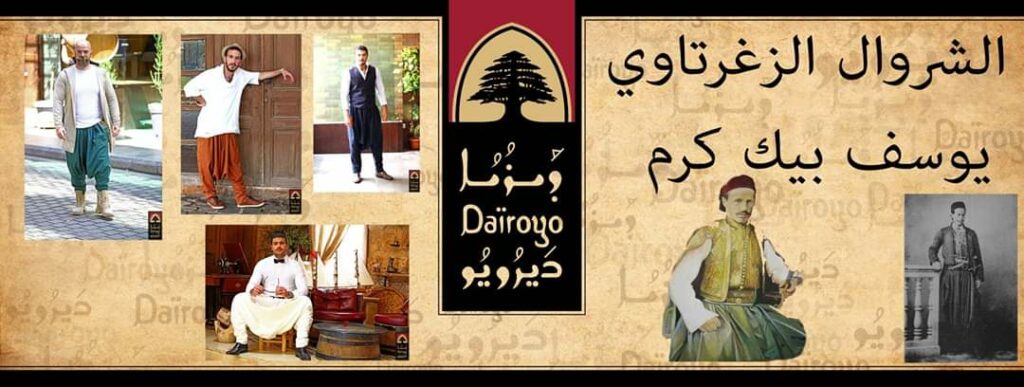
Many types of Lebanese sirwals in our history, and that is due to hard and far communications between high mountains villages and civilizations.
The Zgharta Shirwal
A city in the North of Lebanon, which is known for its hard and strong people. One of them is the national hero Youssef Beik Karam.
This shirwal that we produce is the same that he wore it on the victory day upon the war of Sebiil against the Ottomans.
From the heart of Lebanon, Keserwan was the capital of Mount Lebanon, where many villages lay from the port of Jounieh to the higher mountains.
The Keserwan Shirwal
Our shirwal wore it by a national hero called Tanios Shahine, who led the farmer’s revolution in 1856.

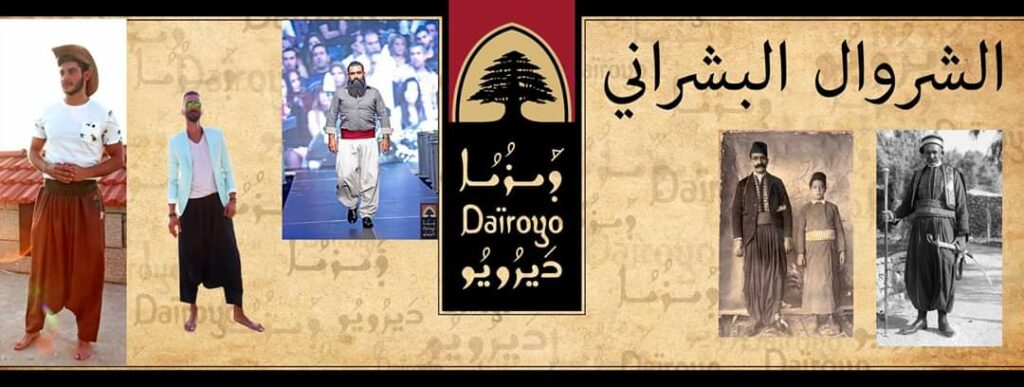
One of the highest village in the north of Lebanon is Bcharreh. Land of Maronites and on the top of the Saint Valley of Qannoubin,
The Bcharreh Shirwal
From there was created a specifically customized shirwal suitable for their daily life.
In South Lebanon, a big village on a high mountain is called Jezzine. It was one of the passing roots with Mountain Lebanon.
The Jezzine Shirwal
Our shirwal wore it by a national hero called Abou Samra Ghanem, who was of the heroes of the farmer’s revolution in 1856.
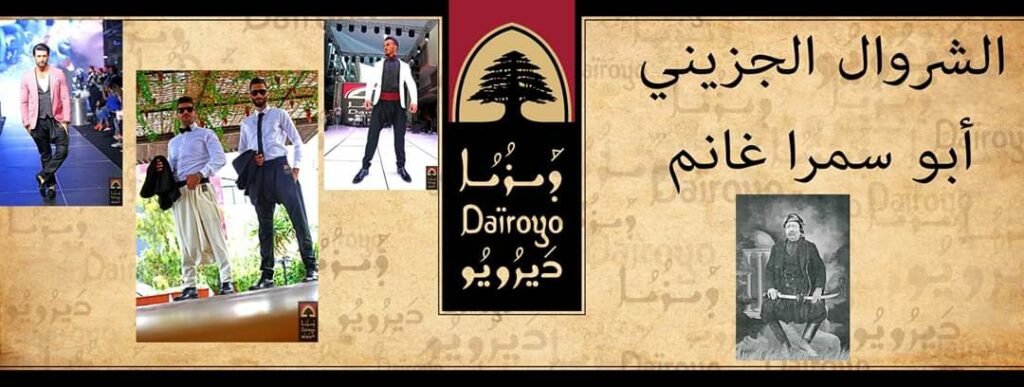

Beirut, the capital and the only sea side city amoung the main villages of the Lebanese history.
The Beirut Shirwal
In Beirut, where the mixture of civilisations and religions, the Shirwal was wore by everyone, specifically by one of the Achrafieh strong leader Hajj Nicholas.
From the heart of Mount Lebanon, The Metn area was the center, where many wars were held between north and south Metn.
The Aarbanieh Shirwal
One of the villages where was the border village between north and south Metn, was Aarbanieh.
A historical shirwal, the one that the Maronites side use to wear, is different from the Druze model.
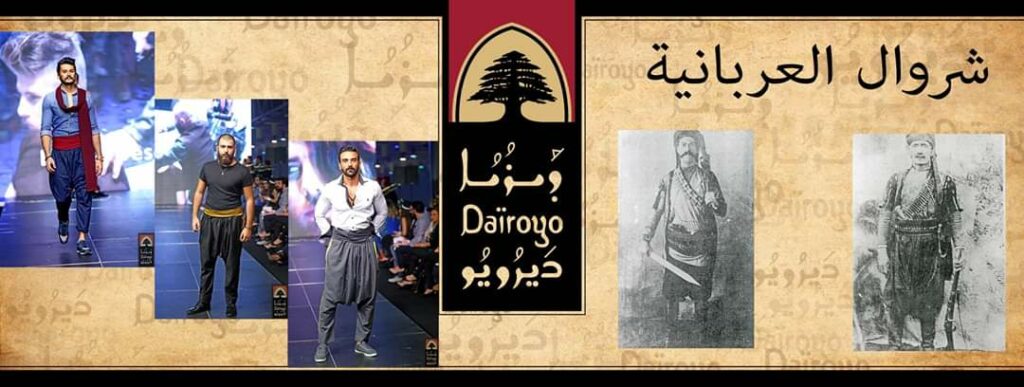
A Few Words About
Our Team
في زمن إختفى فيه الزي التقليدي الوطني، وغاب صنّاعه. يتشرّف المخرج جينو عون بدعوتكم الى حفل إطلاق تصميمه الذي يهدف الى إعادة إحياء الشروال اللبناني الأصيل ديرويو وهو الشروال اللبناني، عمره ١٥٠٠ سنة من الحضارة والأصالة اللبنانيّة السريانيّة نعود مع راهبات وادي قنوبين لإنتاجه بأرقى المعايير ليبقى شروال أجدادنا زيّاً وطنيّاً لا يموت
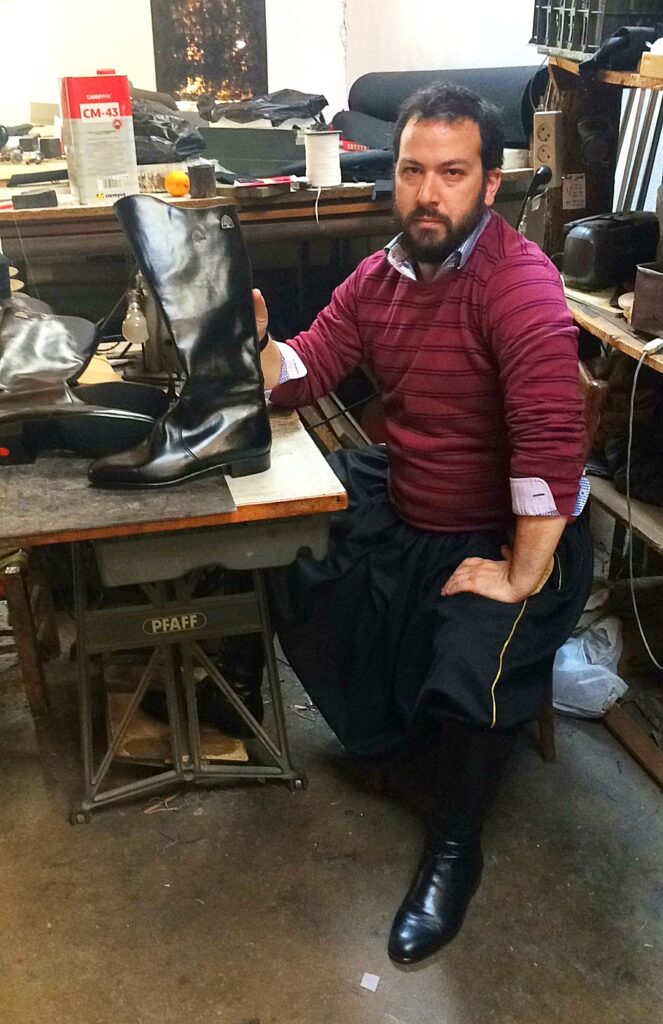
Gino Aoun
Creator of Dairoyo. Originally a TV and cinema director, known for many successful projects and movies. For the passion and love of his Lebanese culture and his vision that this authentic treasure is being forgotten and none anymore is producing what was one of the oldest wear.
And because his ancestors used to wear a traditional shirwal, he insisted on reviving the sirwal again. After many months of studies and research, he resulted in many old models from different parts of Lebanon, and so on he began his industry as a hand-made haute couture with the Antonine Maronites Nuns, who are specialized in the religious high-end costumes.
Designer Gino Aoun, was the first to make a whole catwalk fashion show for shirwals in the world. and then turned with Dairoyo in many countries to spread the Lebanese cultural wear.
He received many awards and is still representing Lebanon abroad for the authentic Lebanese Shirwal.
